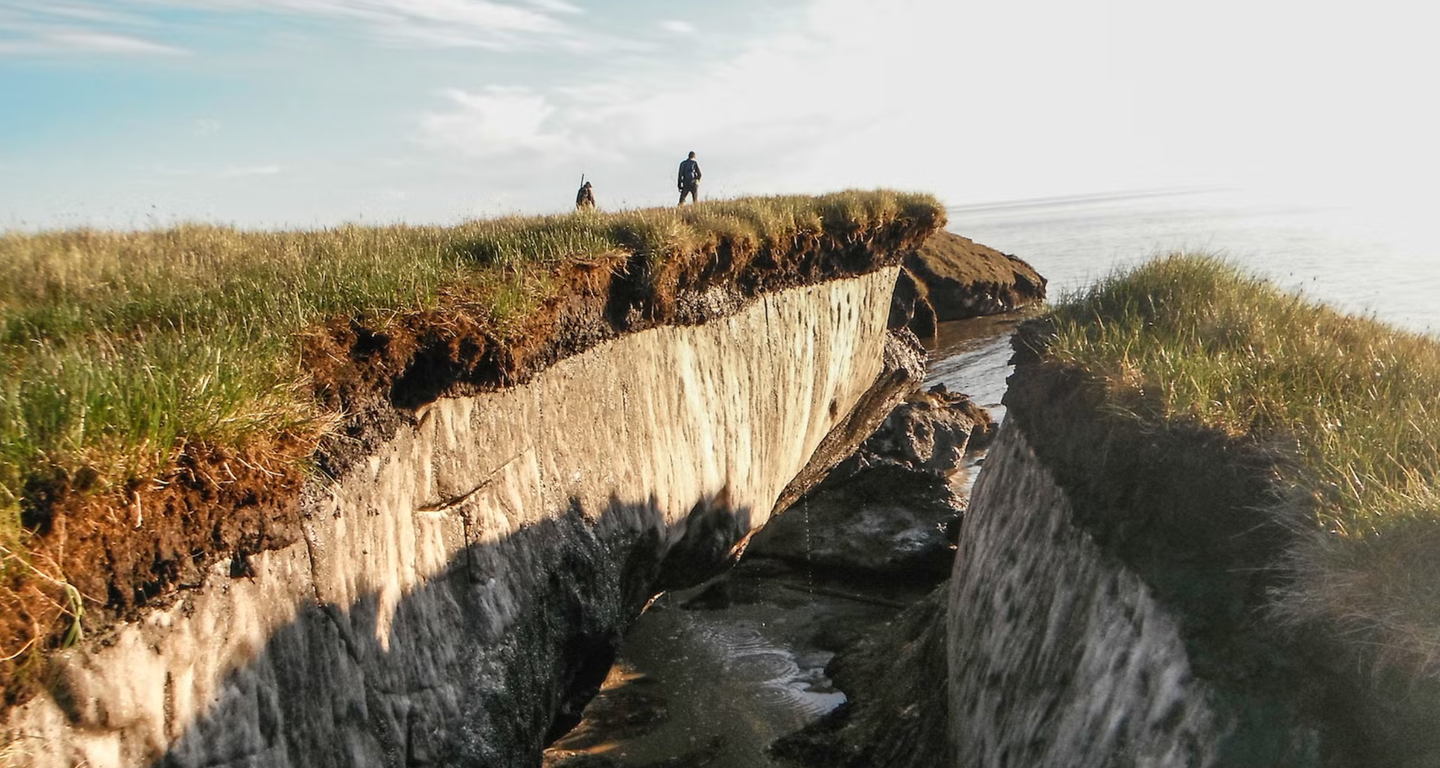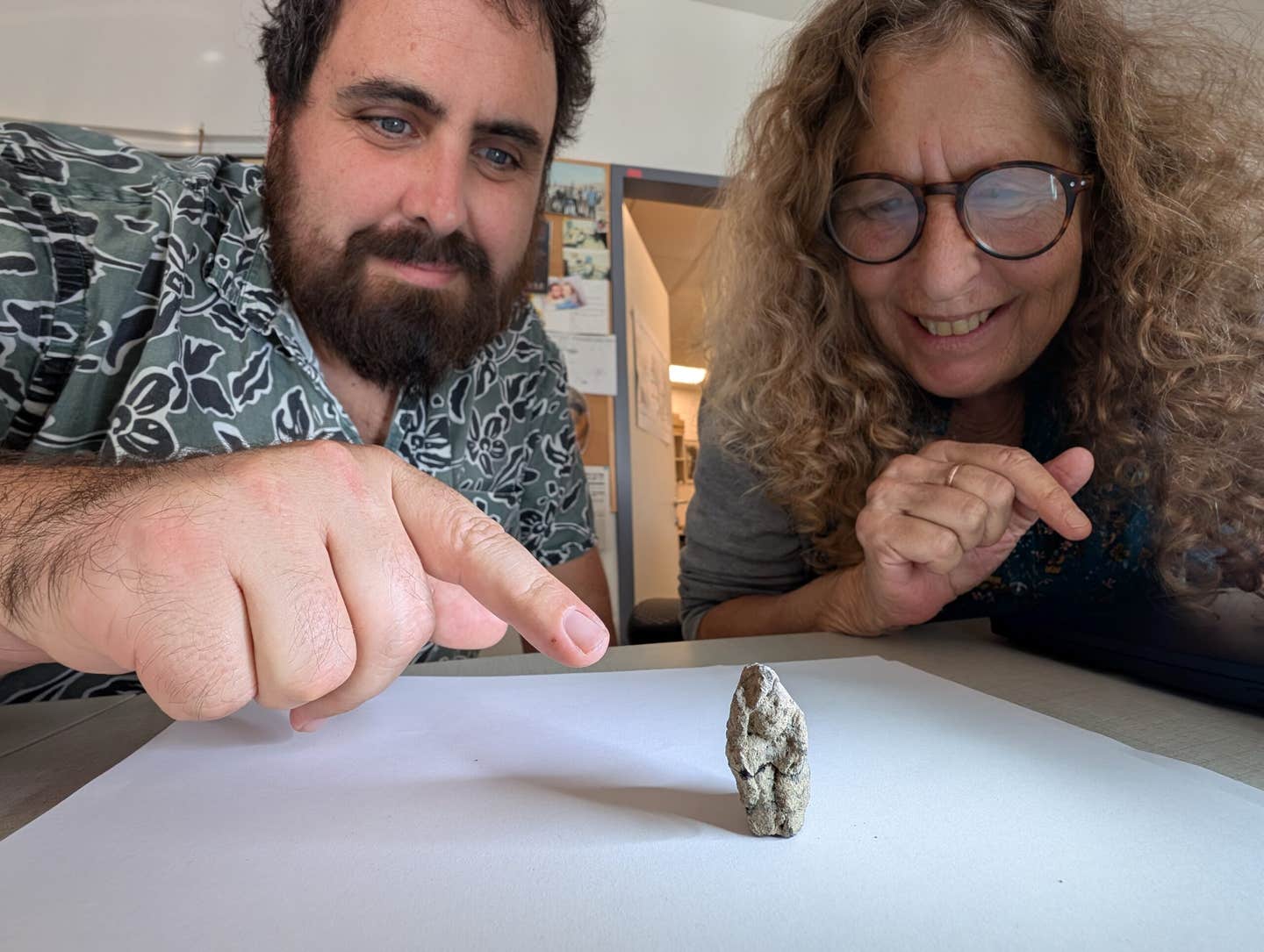Scientists wake up microbes trapped in Arctic permafrost for 40,000 years
Ancient microbes thawing in Arctic permafrost wake slowly, delaying carbon release but raising long-term climate risks.

Thawing permafrost in Alaska. (CREDIT: Brandt Meixell / USGS)
Far beneath the icy Alaskan tundra, life lay dormant for tens of thousands of years. In ice-laden soil called permafrost, microbes of old slumbered in the dark, entombed with the mammoths and bison. When the Arctic is heating up, that icy tomb is now starting to melt—and the microbes slowly waking up with it.
Permafrost is more than frozen ground. It is a natural refrigerator with huge reservoirs of carbon, bigger even than today's supply in the atmosphere. When it melts, the frozen organic matter is a feast for microbes. As they break it down, they may be able to release carbon dioxide and methane, greenhouse gases. Scientists want to know how quickly these communities of ancient, long-frozen life revive when thawed. The response might determine how we perceive the future climate of Earth.
Waking up the frozen
To discover the answers, scientists traveled to an unusual place: the U.S. Army's Permafrost Tunnel just outside Fairbanks, Alaska. Hundreds of feet in length and bored deep beneath the surface, the tunnel runs through ice-encased earth that formed when the world was last cold, during the Ice Age. The walls are covered with ancient detritus—tatters of plants, animal bones, and ice sediment that smell like a decades-long abandoned basement. For microbiologists, the scent is a goldmine of hidden life.
The scientists, led by CU Boulder researchers, drilled up soil cores from as recent as 4,000 years and as ancient as 42,000 years. They then took the samples back to the lab and thawed them out with water and waited to see what happened. To track microbial growth, researchers used a method with "heavy" hydrogen water, where deuterium atoms helped reveal how cells took in the liquid into their membranes.
Tristan Caro, writer and current postdoctoral researcher at Caltech, described the feeling of working with these time capsules. "These are not dead samples by any stretch of the imagination," Caro said. "They're still very much capable of containing robust life that can break down organic material and release it as carbon dioxide."
A slow revival
The initial shock was the sluggishness with which the microbes came back to life. Rather than rebounding to life, they merely stirred. In the first month of thawing, at most 0.001 to 0.01 percent of microbial cells were replacing themselves on a daily basis. For comparison, normal bacteria in a lab setting can reproduce a dozen or more times during one afternoon. These ancient creatures, in contrast, were laboring toward revival.
That delayed response has a silver lining too. If Arctic permafrost soils thaw during summer but then re-freeze before microbes are really active, much carbon might be kept trapped even longer. But six months on, things changed. At six months, the microbial communities were completely different. They no longer looked like the original frozen communities, nor did they look like modern surface microbes. In their place, there were brand-new microbial communities—proof that thawing rewrites the underground life equation.
Even certain microbes began building visible biofilms, gummy colonies you could spot with the naked eye. For the microbes, which had been hibernating nearly 40,000 years, it was like discovering their second wind.
Strangetown chemistry and survival strategies
The soils themselves were bearing witness to survival. The lower layers were less carbonous relative to nitrogen, an indication that microbes long ago had consumed a great deal of easily digestible material. The nitrogen was largely in the form of ammonium, and nitrate was nonexistent. That meant that the surviving microbes had adapted to existing in an extreme environment where resources were limited and conditions were poor.
Biochemical examination revealed yet another strategy. Instead of relying on phospholipids, the common building blocks of most cell membranes, these ancient microbes based their case on glycolipids. Scientists feel glycolipids create a stabilizing influence at sub-freezing temperatures, effectively serving as antifreeze for cells. That's part of the reason why life has endured in the deep freeze of permafrost for millennia.
Gas release: old vs. new
Greenhouse gas release was one of the keys to the mystery. As thawed soils warmed, carbon dioxide and methane began leaking out. But the researchers discovered that all of this gas was not freshly made. Instead, it had been accumulated in the ice and sediments for millennia and just biding their time until the matrix thawed, releasing all of the trapped gas. That makes it impossible to identify the contribution of gas from microbial respiration versus leakage from ancient storage.
Methanogenic microbes—the actual microbe that produces methane—were not related to methane content. This is a clue that they may take even longer and interaction with other bacteria before they can produce in vast amounts. Other studies indicate that it may take nearly a year before methane production from thawed permafrost is actually underway. Currently, much of the methane measured may simply be ancient gas that is just now being emitted.
Lessons for a warming world
Sebastian Kopf, one of the professors at CU Boulder who co-authored the study, pointed to the global significance. "It's one of the biggest unknowns in climate responses," he said. "What will happen when all this ground gets warmed up, where we know tens of tons of carbon are locked up, affect the ecology of these regions and the pace of climate change?"
The research indicates risk and delay. On the one hand, microbial "slow reawakening" means immediate thaw is not the same as immediate emissions. There may be carbon stay put if soils rush to freeze up. On the other hand, if the thaw is extended to months or year-round, microbial populations reorganize into new active ecosystems that can emit carbon into the atmosphere at rising rates.
The most surprising thing was that higher incubation temperatures did not really hurry microbe growth very much. Instead, it was the duration that it thawed. In the Arctic, that means one hot day won't kill it. But extended summers, with warm soil persisting into autumn and spring, might give microbes enough time to awaken completely—and that's when carbon emissions would skyrocket.
The bigger picture
The researchers are aware that controlled lab tests will not be able to capture the complexity of real landscapes. The thaw is uneven in character, with flowing water, plant roots, and the mixing of surface microbes being factors. In nature, faster-growing surface microbes might colonize thawed soils quickly and transfer the advantage. However, the study offers meager, direct evidence of what happens when the life of the Ice Age stirs.
For the time being, what we have is this: ancient microbes persist, still growing, still able to change the atmosphere. They take their sweet time about it, to be sure, but give them a long enough summer, and they'll get up to speed. And when they do, the world will be aware.
Practical Implications of the Research
The study discovers that Arctic permafrost does not dump its cache of carbon at one time when thawed. Microbes instead gradually revive, gaining time before significant-scale emissions begin. That hold-up leads climate models to not only remember the amount of carbon thawed but also when microbes increase.
What is known about difference gives finer detail to forecasts of how quickly greenhouse gases may rise as the Arctic warms. For people, that information underscores the necessity of reducing fossil fuel emissions sooner rather than later.
The longer the summers get in polar regions, the more opportunities there are for microbes of the past to catch up—and when they do, they could drive the climate into further more accelerated warming.
Research findings are available online in the Journal of Geophysical Research Biogeosciences.
Related Stories
- Million-year-old microbes found in mammoths reveal new purpose for DNA
- Oldest living microbes discovered within a 2-billion-year-old rock
- Earth’s deep-sea microbes could hold the key to finding life on Europa
Like these kind of feel good stories? Get The Brighter Side of News' newsletter.
Joshua Shavit
Science & Technology Writer and Editor
Joshua Shavit is a Los Angeles-based science and technology writer with a passion for exploring the breakthroughs shaping the future. As a co-founder of The Brighter Side of News, he focuses on positive and transformative advancements in AI, technology, physics, engineering, robotics and space science. Joshua is currently working towards a Bachelor of Science in Business and Industrial Engineering at the University of California, Berkeley. He combines his academic background with a talent for storytelling, making complex scientific discoveries engaging and accessible. His work highlights the innovators behind the ideas, bringing readers closer to the people driving progress.



